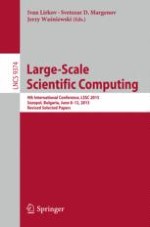2015 | OriginalPaper | Buchkapitel
Spin-Based CMOS-Compatible Devices
verfasst von : Viktor Sverdlov, Siegfried Selberherr
Erschienen in: Large-Scale Scientific Computing
Aktivieren Sie unsere intelligente Suche, um passende Fachinhalte oder Patente zu finden.
Wählen Sie Textabschnitte aus um mit Künstlicher Intelligenz passenden Patente zu finden. powered by
Markieren Sie Textabschnitte, um KI-gestützt weitere passende Inhalte zu finden. powered by
